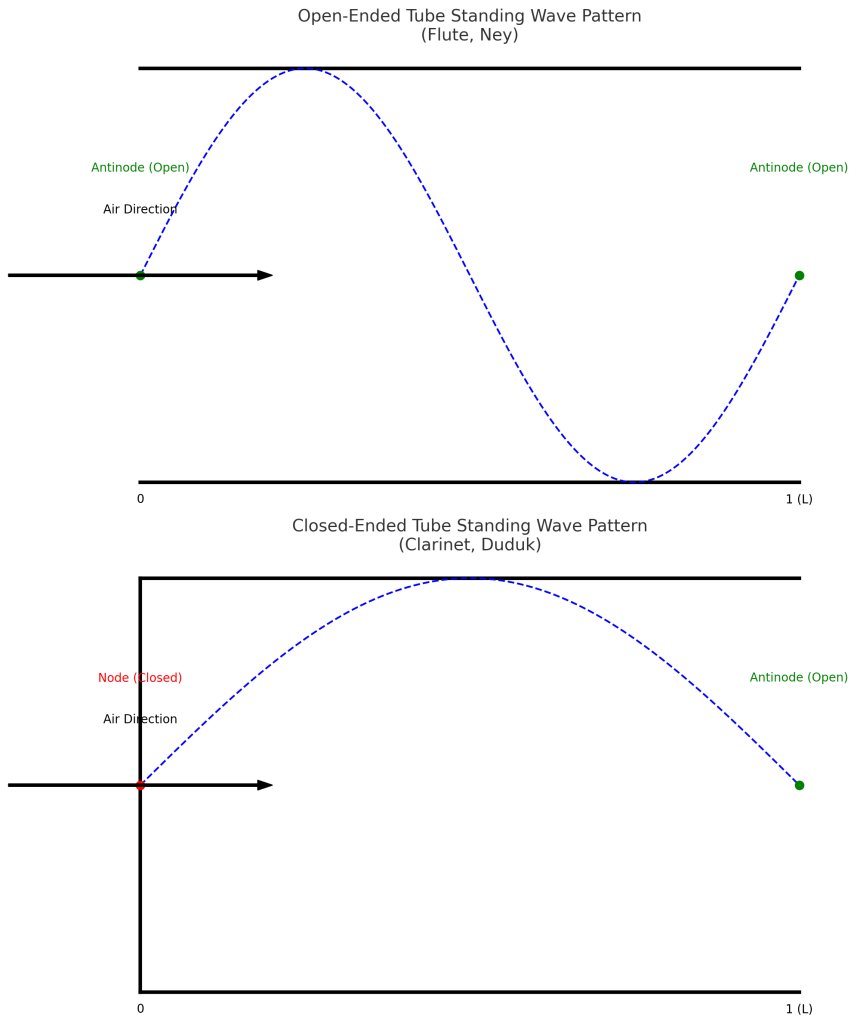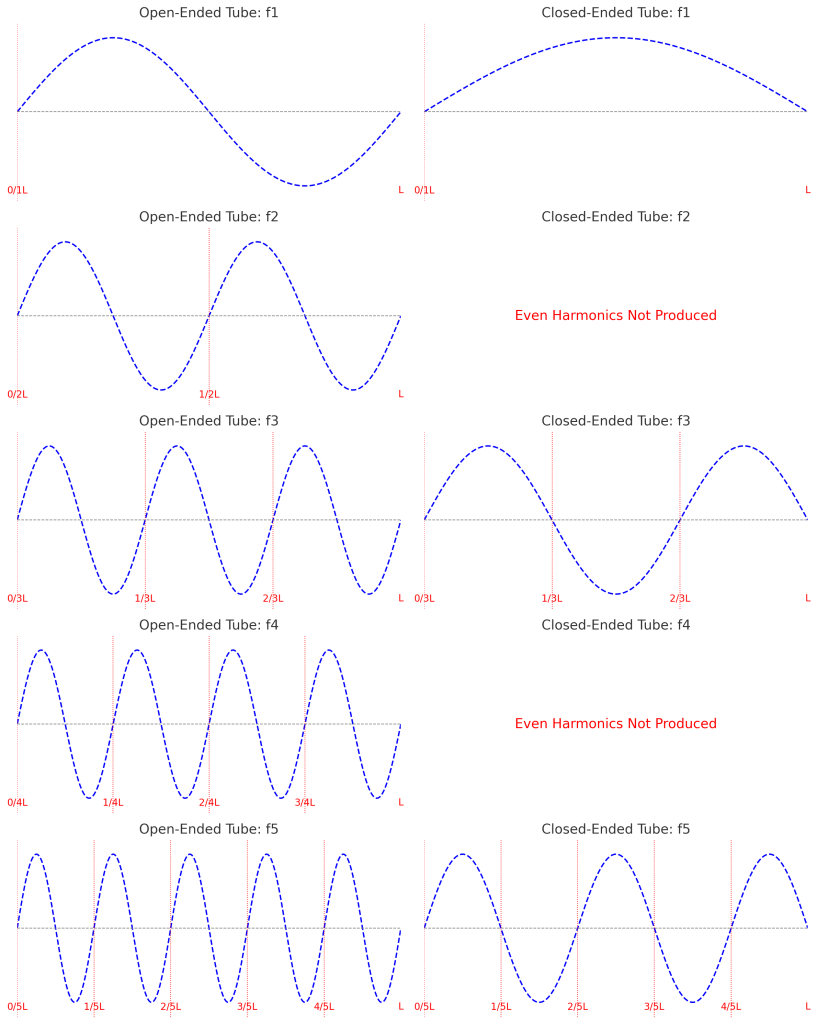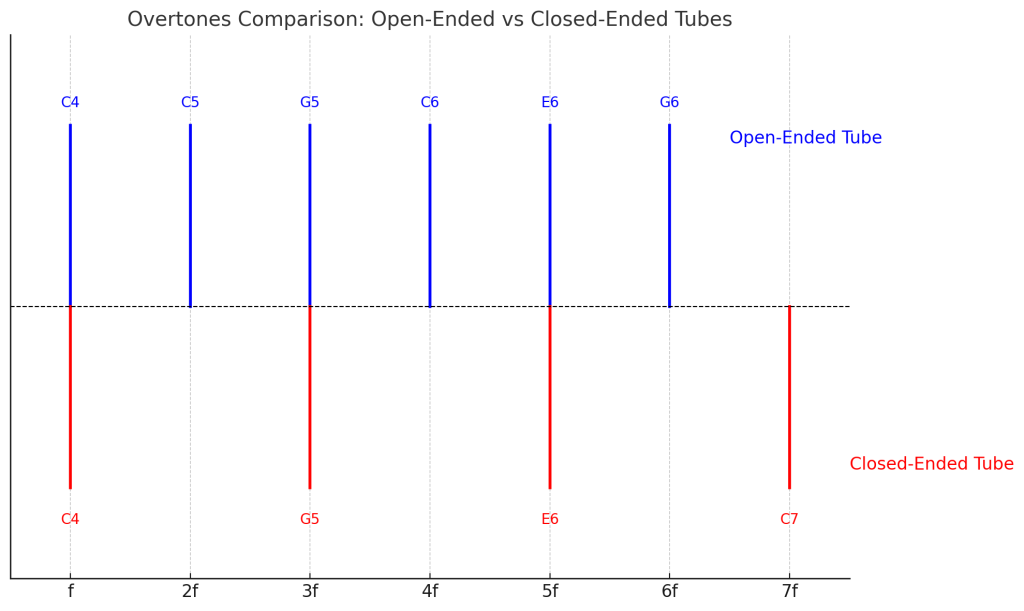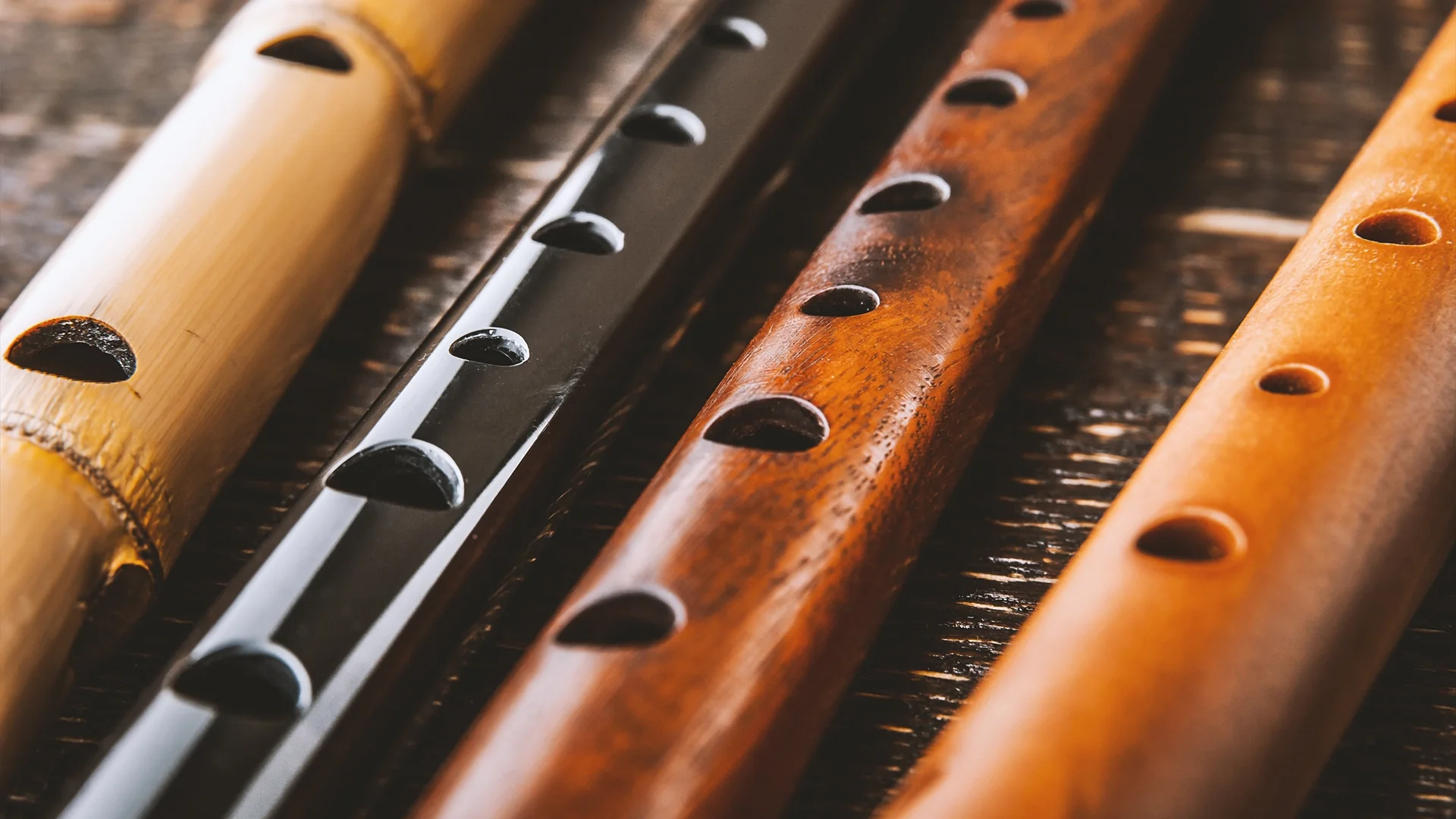Flutes are a family of wind instruments celebrated for their ability to produce a wide range of tones, from gentle and meditative to bright and piercing. These instruments are among the oldest known to humanity, with variations found in almost every culture worldwide. At the heart of their design is the mouthpiece, a key element that defines how sound is generated and shapes the instrument’s tonal characteristics.
Flutes can be categorized into several types based on the design of their mouthpieces and their sound production methods. For example:
- End-Blown Flutes, such as the Arabic Ney and Turkish Ney, rely on the player blowing at an angle across the sharp edge of an open tube, creating an airy, expressive tone.
- Side-Blown Flutes, like the Western Concert Flute and Indian Bansuri, feature an embouchure hole where the player blows across the edge. These designs allow for nuanced control over dynamics and pitch, making them versatile for various musical genres.
- Duct Flutes, including the Recorder and Tin Whistle, use a built-in channel to direct the airflow onto an edge, simplifying sound production and making them ideal for beginners and folk traditions.
- Open Flutes, such as the Pan Flute and Native American Flute, rely entirely on the player’s breath control and embouchure to vibrate the air column at the open ends.
Each flute design reflects the rich cultural traditions and practical needs of its origin, deeply embedded in the music, rituals, and artistic expression of its people.
The Western flute, with its origins traced back to ancient Europe, evolved significantly during the Baroque period and became a centerpiece of classical music in the 17th and 18th centuries. Its refinement, including the addition of the Boehm system in the 19th century, transformed it into a versatile instrument capable of intricate melodies and dynamic expressions. The Western flute played a vital role in orchestral compositions, chamber music, and solo performances, showcasing the elegance and technical brilliance of European classical music traditions.
The ney, a quintessential Middle Eastern flute, has a history spanning thousands of years, deeply intertwined with the spiritual and cultural heritage of the region. From Persian classical music to Turkish Ottoman compositions, and Maqam Melodies in Arab countries, the ney symbolizes transcendence and introspection. Its soft, breathy tones evoke a sense of mysticism, often used to accompany poetry and spiritual gatherings. The ney’s design varies slightly across regions, reflecting local musical scales and styles, but its role as an instrument of emotional and spiritual depth remains universal.
The bansuri, a traditional Indian flute made from bamboo, is one of the oldest musical instruments in Indian culture, dating back to ancient Hindu scriptures and mythology. It is closely associated with Lord Krishna, symbolizing divine love and pastoral life. In Indian classical music, the bansuri is a key instrument for both Hindustani and Carnatic traditions, where it is celebrated for its ability to mimic the human voice. Its simple construction and deep connection to nature make it a powerful tool for expressing the intricate ragas and emotional depth of Indian music.
These flutes, while diverse in their origins and designs, share a common role as vessels of cultural identity and artistic expression, each deeply resonating with the traditions and landscapes of their homelands.
The shape and design of a flute’s mouthpiece not only determine the ease of sound production but also influence the tonal quality, range, and expressive possibilities of the instrument. By exploring these acoustic principles, this article aims to uncover the science behind flutes, focusing on how open-ended and closed-ended tubes, hole positioning, and overtones work together to produce their characteristic sounds.
Importance of Acoustics
The beautiful, resonant sound of a flute is deeply rooted in the science of acoustics. The vibration of air columns, interaction with holes, and physical structure of the instrument all play a role in determining its pitch, tone, and dynamic range. Understanding these principles not only explains how flutes work but also reveals the craftsmanship behind their construction and the techniques musicians use to master them.
Purpose of the Article
This article aims to delve into the fascinating acoustics of flutes, focusing on:
- The dynamics of open-ended and closed-ended tubes.
- How the placement of holes changes pitch and frequency.
- The role of overtones in expanding the range and tonal richness of wind instruments.
By uncovering these principles, readers will gain a deeper appreciation for the scientific and artistic interplay that gives the flute its timeless allure.
Practical Implications of Flute Design and Performance
The flute’s design and playing techniques represent a unique blend of artistry and science. For performers, mastery of acoustic principles is essential to unlocking the instrument’s expressive potential, while for makers, the challenge lies in crafting instruments that balance tradition, innovation, and precision.
The Player’s Art: Bringing the Flute to Life
Flutists rely on embouchure and breath control to shape the instrument’s sound. The angle and force of the airstream, combined with subtle adjustments in lip positioning, determine pitch and tone. Traditional flutes like the ney require precise control of the air’s direction to produce their signature breathy resonance. Finger placement, whether using modern key systems or manual techniques, defines the vibrating air column’s length, allowing players to shift between notes with fluidity.
Awareness of acoustics also plays a critical role. The way sound resonates within the flute and interacts with its environment affects performance, emphasizing the importance of adapting technique to different settings.
Craftsmanship and Innovation: Shaping the Instrument
Makers of Western flutes have transformed the instrument’s capabilities, most notably through Theobald Boehm’s 19th-century innovations. His key system improved pitch accuracy, tonal quality, and technical range, establishing the modern concert flute as a versatile tool in classical music.
In contrast, traditional flutes like the bansuri and ney have preserved their designs for centuries. These instruments rely on simple, natural materials and reflect their cultural roots. Their enduring appeal lies in their ability to produce deeply organic sounds, placing the onus on the musician’s skill for tonal richness and dynamic expression.
Today, flute makers face the dual challenge of meeting the acoustic demands of modern musicians while honoring traditional designs. Innovations in materials, such as resin-coated bamboo for traditional flutes or platinum for Western flutes, ensure durability and tonal consistency while respecting their heritage.
Harmonizing Tradition and Progress
The evolution of flutes highlights the interplay of tradition and innovation. For players, understanding technique and acoustics elevates their artistry. For makers, blending cultural authenticity with modern advancements ensures the flute continues to inspire musicians worldwide, from the simplicity of the ney and bansuri to the precision of the concert flute.
Dynamic Sound Characteristics of Flutes
Resonance and Timbre
The unique sound of a flute is shaped by its resonance and timbre, which depend on the instrument’s material, design, and shape. The flute’s timbre, or tonal quality, is influenced by:
- Shape and Material: The flute’s material (e.g., wood, bamboo, metal) and shape (cylindrical, conical) affect the resonance and vibrational patterns of the air column.
Wooden flutes, for instance, tend to produce a warmer, softer tone compared to the brighter and more metallic timbre of metal flutes. - Hole Size and Position: Larger holes typically allow for clearer, louder tones, while smaller holes create more subtle tonal variations. The precise placement of holes impacts
the pitch and intonation, contributing to the richness of the instrument’s sound.
Modes of Vibration
The sound produced by flutes involves complex modes of vibration in the air column, categorized as transverse or longitudinal:
- Transverse Modes: In transverse flutes, the player blows across the edge of the mouthpiece, creating alternating pressure zones that resonate
along the air column. This mode is responsible for the characteristic bright, focused sound of flutes like the concert flute or bansuri. - Longitudinal Modes: In longitudinal flutes, such as the ney or shakuhachi, the air vibrates along the length of the tube, producing a more breathy,
meditative tone. These vibrations depend heavily on the player’s control of the air stream and embouchure.
Both modes of vibration contribute to the instrument’s ability to produce dynamic and expressive tones.
What Are Open-Ended and Closed-Ended Tubes?
Open-Ended Tubes:
Open-ended tubes have both ends open, allowing air to flow freely in and out. Instruments like the flute and ney are examples of this type. When air is blown across or into the tube, standing waves form with antinodes (points of maximum vibration) at both ends. These tubes support a complete harmonic series, enabling the production of both even and odd harmonics. This feature gives open-ended tubes their bright, versatile tonal characteristics.
Closed-Ended Tubes:
Closed-ended tubes have one end sealed and the other open, such as the clarinet, the duduk, and all brass instruments such as the trumpet. The closed end forces a node (point of no vibration) at that end, while the open end has an antinode. This configuration limits the harmonic series to odd harmonics only, creating a warm and resonant sound. The closed-end design also requires air to travel four times the length of the tube to complete a full wavelength, resulting in lower fundamental frequencies compared to open-ended tubes of the same length.
Energy and Sound Propagation
The dynamic characteristics of a flute are also shaped by how energy is transferred between the player and the instrument. Key factors include:
- Breath Energy: The player’s breath provides the energy that drives the vibrations in the air column. Variations in air pressure, speed, and direction enable dynamic shifts in volume, pitch, and tone.
- Instrument Response: The flute’s construction determines how efficiently it converts breath energy into sound. High-quality flutes are designed to minimize energy loss and maximize resonance.
- Sound Propagation: As sound waves propagate through the air column, their interaction with the flute’s material and open holes affects the tonal richness and projection.
These energy dynamics are critical in shaping the overall performance characteristics of the flute, allowing players to achieve both subtle nuances and powerful, resonant tones.
Understanding the Basics of Sound in Tubes
The Role of Hole Positions in Frequency Control
Flutes and other wind instruments rely on the strategic placement and use of holes to control pitch. By opening or closing these holes, players can alter the effective length of the vibrating air column inside the tube, directly influencing the instrument’s frequency and pitch. Here’s an exploration of how this works and the science behind it.
Changing Effective Length
Opening or closing holes along the body of a flute changes the length of the air column that vibrates to produce sound. When a hole is opened, the air column effectively ends at that hole rather than continuing to the end of the flute. This shorter column vibrates at a higher frequency, producing a higher pitch.
Conversely, closing holes extends the vibrating air column, resulting in a longer wavelength and lower frequency. This simple mechanism allows flutes to cover a wide range of notes, with the pitch determined by the length of the column.
Frequency Calculation

The relationship between the air column’s length, the speed of sound, and the resulting frequency is expressed mathematically. For an open-ended tube, the fundamental frequency is given by:
f
=
v
2
L
Where:
- f is the frequency (Hz),
- v is the speed of sound (approximately \( 343 \, \text{m/s} \) at 20°C),
- L is the effective length of the vibrating air column (m).
For example, if a flute with an effective vibrating length of \( 0.6 \, \text{m} \) produces a pitch:
f
=
343
2
×
0.6
=
286
Hz
This corresponds to a pitch slightly above middle C (\( 261.63 \, \text{Hz} \)). By opening holes, the effective length (\( L \)) is reduced, increasing \( f \). Closing holes increases \( L \), lowering \( f \).
In practice, the length required to produce middle C in open-ended flutes ranges between 59 and 61 cm, deviating from the idealized calculation.
This discrepancy arises due to:
- Energy Loss: In real instruments, some energy is lost due to air resistance and imperfections in the material, slightly shortening the effective vibrating air column.
- Shape Adjustments: Instruments like the ney that are made out of reed or bamboo found in the nature are not perfectly cylindrical internally; they may taper or expand slightly, affecting the airflow and resonance.
- End Correction: Open-ended tubes experience a phenomenon known as “end correction,” where the effective length of the vibrating air column extends slightly beyond the physical end of the tube. This correction accounts for the interaction between the air inside the tube and the external air, slightly altering the required length.
Acoustic Impedance
Holes act as points of acoustic impedance within the flute. Impedance refers to the resistance to the flow of sound energy, and each open hole introduces a boundary where the sound wave partially reflects and partially escapes. This reflection and escape modulate the resonance of the air column, helping define the effective length.
The size and placement of the holes also play a role:
- Large holes: Allow sound to escape more easily, reducing impedance and more effectively shortening the vibrating air column.
- Smaller holes: Create partial reflections, slightly altering the effective length without fully terminating the column.
This interaction between impedance and resonance ensures that the flute produces clear, well-defined tones at each pitch.
Design and Placement
Flute makers carefully balance the placement of holes for both ergonomic and acoustic performance:
- Ergonomics: Holes are spaced to be reachable by the player’s fingers, ensuring comfort and playability.
- Acoustics: Hole placement is determined by the desired pitch for each note, with precise calculations to achieve accurate tuning.
Adjustments may also consider the flute’s material, shape, and the effects of impedance.
For example, the Western concert flute features holes strategically placed to align with tempered tuning standards while maintaining a comfortable reach for players. Instruments like the ney or bansuri use natural materials and manual shaping, resulting in slightly different tonal
properties based on craftsmanship.
Flutes and other wind instruments rely on the acoustic principles of vibrating air columns to produce sound. These instruments can be classified into open-ended and closed-ended tubes, each with distinct relationships between tube length, wavelength, and frequency.
While the mathematics provides a foundation for understanding, real-world factors and the behavior of sound waves in different tube designs introduce additional nuances.
Overtones and Harmonic Series in Flutes
The harmonic series and overtones are essential in defining the sound characteristics of flutes. These higher frequencies resonate above the fundamental note and contribute to the instrument’s rich and dynamic sound.

What Are Overtones?
Overtones are higher-frequency sound waves that resonate within the flute’s air column in addition to the fundamental frequency. They occur as natural multiples of the fundamental frequency, forming the harmonic series. Overtones add texture and depth to the flute’s sound, enriching its tonal palette.
The harmonic series for an open-ended flute is given by:
f
,
2
f
,
3
f
,
4
f
,
…
Playing Overtones
Flutists use specific techniques to access overtones, enhancing the range and expressiveness of the instrument:
- Varying Air Pressure: Adjusting the force of the airstream can excite higher vibration modes, producing overtones.
- Embouchure Adjustments: Tightening the lips or altering the angle of the airflow helps resonate higher frequencies.
- Special Fingerings: Some flutes use specific fingerings to facilitate overtone production, allowing players to access higher notes with ease.
Extending the Range
Overtones are critical for extending the playable range of flutes:
- Multiple Octaves: By leveraging overtones, flutists can span two or more octaves without additional keys or tube length.
- Dynamic Timbres: Overtones allow for experimentation with tone quality, providing both brightness and subtle textures depending on their use.
Instruments like the bansuri and ney utilize overtones extensively to achieve their wide range and expressive capabilities.
Comparison of Harmonic Structures

Open-ended and closed-ended flutes differ in how they produce overtones:
- Open-Ended Flutes: Support a complete harmonic series, enabling a broad range of overtones for a versatile and bright sound.
- Closed-Ended Flutes: Produce a limited harmonic series, focusing on odd harmonics, which contributes to their distinct tonal qualities.
Overtones in Open-Ended Tubes
Open-ended tubes, like those in the Western concert flute, ney, and bansuri, have both ends open to air. When air is blown across the mouthpiece, standing waves form within the tube. These standing waves exhibit antinodes (points of maximum vibration) at both ends.
The fundamental wavelength (\(\lambda\)) for an open-ended tube is:
λ
=
2
L
The frequency (\(f\)) is calculated as:
f
=
v
λ
where \(v\) is the speed of sound (approximately \(343 \, \text{m/s}\) at 20°C).
For an open-ended flute producing middle C (\(261.63 \, \text{Hz}\)), the ideal tube length (\(L\)) is:
L
=
λ
2
=
v
2
f
=
343
2
×
261.63
≈
0.655
m
(
65.5
cm
)
Overtones in Closed-Ended Tubes
In closed-ended tubes, one end of the tube is sealed, requiring the standing wave to form a node (no vibration) at the closed end and an antinode at the open end.
This restriction modifies the relationship between the tube’s length and the wavelength:
λ
=
4
L
The frequency (\(f\)) for a closed-ended tube is calculated as:
f
=
v
λ
=
v
4
L
For a closed-ended tube (e.g., clarinet) producing middle C, only half the length of an open-ended tube is required to achieve the same wavelength:
L
=
λ
4
=
v
4
f
=
343
4
×
261.63
≈
0.328
m
(
32.8
cm
)
Why Closed-Ended Tubes Cannot Produce Even Harmonics
The absence of even harmonics in closed-ended tubes is a direct result of their node-antinode boundary conditions:
- Wave Reflection: At the closed end, the wave reflects back with its phase inverted, forcing a node at the sealed end.
- Odd Multiples Only: The closed-ended tube can only support standing wave patterns where the vibrating air column fits odd multiples of a quarter-wavelength
(\(\lambda/4, 3\lambda/4, 5\lambda/4, \ldots\)). Even harmonics (\(2f, 4f, \ldots\)) cannot occur because they would require a second antinode to form at the closed end, which is physically impossible.
The absence of even harmonics in closed-ended tubes is a direct consequence of the unique boundary conditions created by their physical structure. Specifically, the interaction between the node (at the closed end) and the antinode (at the open end) fundamentally limits the harmonic series.
At the closed end of the tube, the sound wave reflects back with its phase inverted. This inversion creates a node—a point where no vibration occurs. Conversely, the open end supports an antinode—a point of maximum vibration. These boundary conditions dictate the behavior of standing waves within the tube.
Closed-ended tubes can only support standing wave patterns where the vibrating air column fits odd multiples of a quarter-wavelength (λ/4, 3λ/4, 5λ/4, ...).
Even harmonics (2f, 4f, 6f, ...) are impossible because they require an additional antinode to form at the closed end, which is physically unattainable due to the reflection inversion at the node.
This phenomenon explains the unique tonal characteristics of closed-ended instruments like the clarinet and duduk, which emphasize odd harmonics to produce their distinct, resonant sound.

